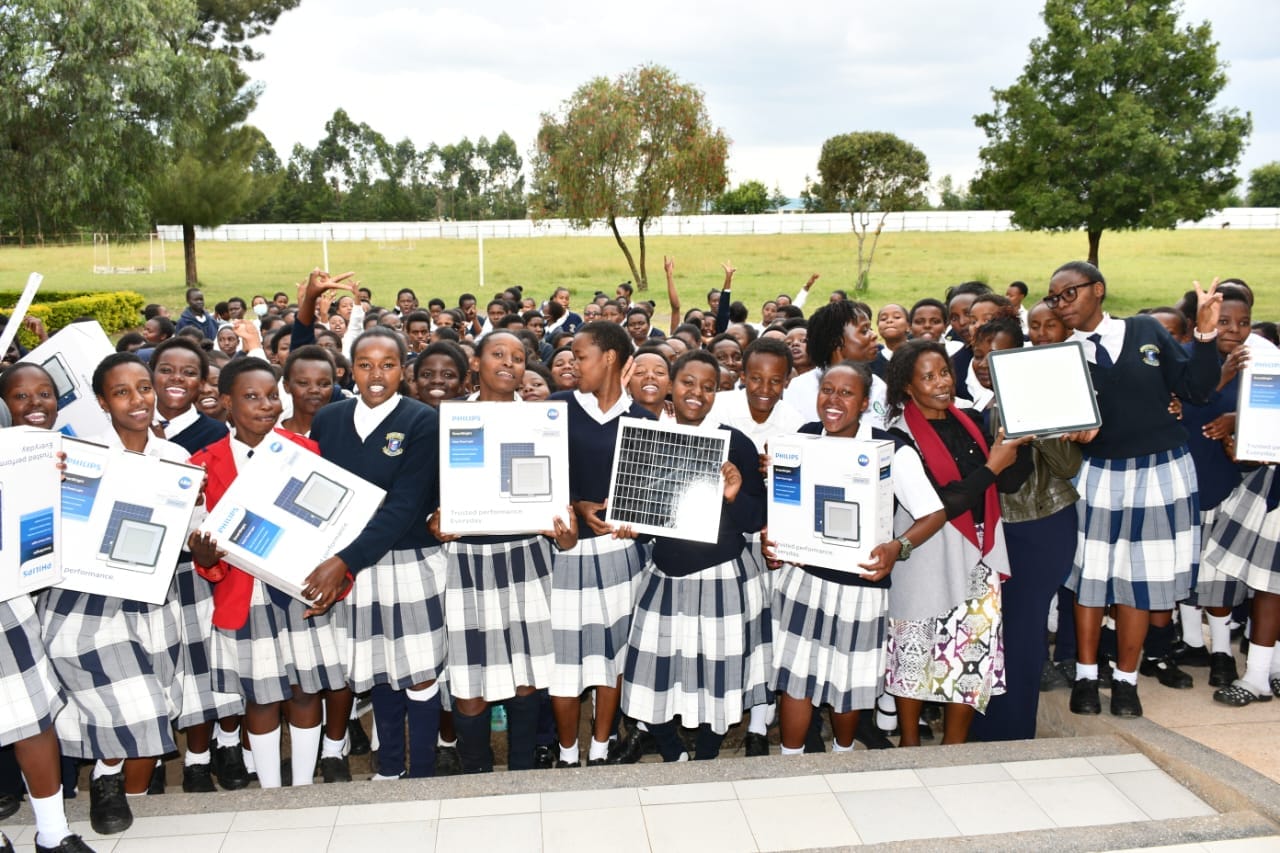Nakuru schools picked for energy-efficient lighting pilot program
ESTHER MWANGI-KNA
At least 30 secondary boarding schools in Nakuru County will benefit from efficient lighting equipment that will help reduce costs incurred on electricity bills.
County Executive Committee Member (CECM) for Water, Environment, Energy, Climate Change, and Natural Resources, Dr. Nelson Maara, said the targeted schools will receive donations of light-emitting diodes (LED) tubes and solar outdoor lighting appliances from the Signify Foundation through the State Department for Energy as part of a pilot program.
The CECM explained that the initiative, which is being implemented by the Ministry of Energy and Petroleum and the Ministry of Education in partnership with private and development entities such as the Signify Foundation, Sustainable Energy for All, and UNEP CCC, is geared toward providing superior lighting solutions for both indoor and outdoor spaces in schools.
He further stated that Kirobon Girls’ High School had been selected as a pilot school to install the energy-efficient lighting systems, where a monitoring and evaluation process will be conducted to assess the impact of the lighting systems on the school environment and to ensure their effective ness and sustainability.
Dr. Maara, who was accompanied by the Director for Environment, Climate Change, Energy, and Natural Resources, Mr. Dennis Kipyator, said the LED tubes and solar outdoor appliances will replace the high-energy consumption fluorescent tube lights and bulbs.
The CECM mentioned that a team of inspectors from the Ministry of Energy and Petroleum, the Energy and Petroleum Regulatory Authority (EPRA), and Sustainable Energy for All (SE4ALL) had inspected various schools in the county to assess their readiness for the pilot project, which he said will cover all 11 sub-counties.
The ministry will then develop a learning pack to help students and teachers understand the benefits of energy-efficient lighting solutions, Dr. Maara added.
He noted that the project will help cut down the cost of electricity bills in public schools, which currently average Sh50,000, reducing them “Electricity bills for our schools are very high and have increasingly become a significant challenge for them because funding is a problem, as public schools depend on the government for funding,” Dr. Maara added.
He regret ted that the Kenya Power and Lighting Company (KPLC) sometimes issues warnings of disconnecting power for failure to clear electricity bills, a move he noted inconveniences both learners and teaching staff in the schools.
“Schools also encounter power outages, and when these occur, they experience significant problems since many have boarding sections,” Dr. Maara noted.
The CECM stated that replacing the types of bulbs that schools use with more efficient energy-saving bulbs will help them cut down on electricity expenses.
To become energy-efficient, particularly in homes, the CECM explained that one should change the lighting type from compact fluorescent lamps to light-emitting diodes and acquire energy-efficient appliances that are properly rated and labeled with five stars.
This, he added, leads to a reduction in the units consumed per month without affecting the quality of energy available. He also mentioned that industrial, commercial, and institutional facilities are tasked with retrofit ting their lighting systems, enlarging windows to allow natural light, and improving natural ventilation to reduce reliance on air conditioning appliances, as well as adopting solar PV systems.
By doing so, Dr. Maara said, this initiative would lower energy bills for consumers and reduce costs for companies. It would also enhance the purchasing power of individuals, allowing companies to enjoy reduced production costs, leading to cheaper pricing of goods and making Kenyan-made products more competitive both locally and in the international market.
The CECM further elaborated that energy efficiency would reduce the strain on the national grid with the ‘saved’ energy redistributed to other regions that were unsupplied.
With such a relief of power strain on the grid, he said the country will save billions of shillings that would have been spent on building new power plants to supply energy to newer customers.
Dr Maara also pointed out that use of natural light through windows, skylights, and light tubes, which capture daylight and pipe it into dark corners of buildings is an other effective option to consider and can reduce the need for other forms of lighting.
Since 2004, when con versations around energy efficiency were mooted by the Energy and Petroleum Authority (Epra), stake holders from different sectors were actively in volved, culminating in the formulation and gazettement of the Energy Management Regulations 2012.

